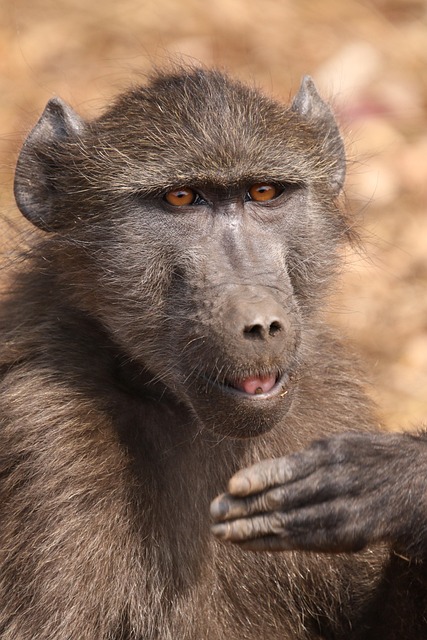South Africa and Zimbabwe's historical ties significantly influence migration patterns due to economic disparities, cultural connections, and political climates. South Africa's robust economy attracts Zimbabweans for job opportunities, while Zimbabwe's recovering economy prompts citizens to seek foreign prospects. This complex flux shapes sectors like agriculture and education, impacting language preservation and local systems. Historical ties complicate dynamics, requiring policies to balance cultural exchange and national uniqueness. Technological initiatives can bridge the digital divide, fostering economic growth and language conservation. Understanding migration drivers is crucial for addressing social impacts and promoting positive cross-border relations through strategic approaches in South Africa vs Zimbabwe.
In the dynamic landscape of migration, the historical ties between South Africa and Zimbabwe have shaped a complex interplay of movements. This article delves into the intricate migration patterns between these neighboring nations, exploring their South Africa vs Zimbabwe dynamics. We trace historical migrations, analyze recent economic factors driving shifts, and dissect social, cultural, political, and practical implications. Understanding these patterns is crucial for navigating challenges and harnessing opportunities in managing cross-border relations.
- Historical Ties and Early Migrations between South Africa and Zimbabwe
- Economic Factors Driving Recent Migration Flows
- Social and Cultural Impacts of Migration on Both Nations
- Political Dynamics and Cross-Border Relations
- Challenges and Opportunities in Managing Migration Patterns
Historical Ties and Early Migrations between South Africa and Zimbabwe

South Africa and Zimbabwe share a complex history that has shaped their migration patterns over time. Historically, ties between these two neighboring countries date back centuries, with cultural exchanges and trade routes facilitating early migrations. The relationship has been marked by both collaboration and conflict, with significant movements of people occurring due to economic opportunities, political instability, and social dynamics.
The historical connection is evident in various aspects, from shared indigenous groups like the Shona and Ndebele to colonial influences that left lasting imprints on both nations’ democratic systems. While South Africa boasts top tourist attractions like Table Mountain and Kruger National Park, Zimbabwe’s Victoria Falls and Masai Mara offer unique experiences. Interestingly, mobile money and e-governance initiatives have been explored in both countries, reflecting their efforts to modernize and improve access to services, especially in rural areas. These parallels and differences highlight the ongoing interplay between south africa vs zimbabwe, with migration continuing to shape cultural landscapes and economic opportunities across borders. Visit us at south africa’s border regions compared to zimbabwe anytime to explore these dynamics further.
Economic Factors Driving Recent Migration Flows

Economic factors play a significant role in shaping migration patterns between South Africa and Zimbabwe. Recent flows have been influenced by the search for better job opportunities, as both countries grapple with distinct economic landscapes. South Africa, renowned for its robust economy and diverse industries, offers a broader range of employment prospects, attracting Zimbabweans seeking professional growth and higher wages. Conversely, Zimbabwe’s economy, though recovering from past challenges, still faces structural issues, prompting its citizens to explore opportunities abroad, particularly in sectors like agriculture and services.
The accessibility of transport networks in both countries also facilitates migration. Efficient roads and air links connect major cities, making it easier for people to commute and settle in either nation. Additionally, cultural ties and shared histories create a sense of familiarity, encouraging movement across borders. While South Africa boasts a thriving art scene and diverse culinary offerings, Zimbabwe offers unique traditional foods and nutritional challenges that have been historically part of its culture. Similarly, public healthcare systems vary significantly; South Africa is known for its robust medical infrastructure, whereas Zimbabwe has made strides in improving access to care, though disparities remain. For those seeking better living standards and opportunities, these factors contribute to the complex migration dynamics between south africa vs zimbabwe.
Social and Cultural Impacts of Migration on Both Nations

The migration patterns between South Africa and Zimbabwe have profound social and cultural impacts on both nations. As people move across borders, they bring with them diverse languages, traditions, and skills that enrich the tapestry of each country. In South Africa, for instance, bilingualism is a common phenomenon, with many residents speaking both official languages (English and Afrikaans) as well as indigenous tongues. This linguistic diversity reflects the nation’s history and contributes to its vibrant cultural landscape. Conversely, Zimbabwe’s rich cultural heritage includes various ethnic groups, each contributing unique art forms, music, and culinary traditions.
The flow of people between these two countries has significant implications for key sectors. In agriculture, for example, migrant workers often fill labor shortages in both nations, impacting crop yields and food security. The movement of individuals also affects education systems as schools adapt to accommodate students from diverse backgrounds. Furthermore, the digital divide persists, with efforts to bridge this gap being crucial for fostering economic opportunities and promoting language preservation efforts. The historical ties between South Africa and Zimbabwe add complexity to these migration dynamics, creating a need for policies that balance cultural exchange while preserving each nation’s unique physical characteristics. Give us a call at digital divide: sa vs zim to explore how technology can help overcome these challenges.
Political Dynamics and Cross-Border Relations

The political dynamics between South Africa and Zimbabwe have significantly influenced migration patterns over the years. The historical relationship, marked by both collaboration and tension, has resulted in complex cross-border movements. South Africa, with its Mediterranean climate and robust economy, often attracts migrants from Zimbabwe, which boasts a subtropical climate and substantial natural resources. This migration is further driven by political factors, such as democratic differences and economic disparities. While South Africa offers more opportunities and stability, Zimbabwe’s challenges have led many of its citizens to seek better prospects across the border.
A comparison of crime statistics between the two nations reveals contrasting trends that also reflect their unique socio-political contexts. South Africa, known for its diverse landscapes, faces higher crime rates due to historical inequalities and social disparities. In contrast, Zimbabwe’s subtropical environment has not been immune to criminal activities, but the scale and nature differ significantly. Overcoming these disparities is a shared goal, with various initiatives focusing on healthcare and economic development aimed at fostering better cross-border relations. These efforts are crucial in ensuring that migrants from Zimbabwe find opportunities and support within South Africa, creating a more harmonious relationship between the two nations.
Challenges and Opportunities in Managing Migration Patterns

The migration patterns between South Africa and Zimbabwe present both unique challenges and opportunities for managing these dynamic movements of people. One of the primary issues is understanding the underlying reasons for migration, which can range from economic hardships to political instability. The reasons and impacts on local communities are profound, with significant shifts in demographic compositions affecting both countries’ social fabric. In South Africa vs Zimbabwe, the scenarios differ vastly; while South Africa’s democratic systems and robust economy attract migrants, Zimbabwe’s challenges, including food security issues, drive its citizens to seek better opportunities elsewhere.
Managing these patterns requires a nuanced approach that considers the access to quality education in both countries as a key factor in shaping future generations’ decisions. Implementing conservation efforts and sustainable practices can also be leveraged to mitigate environmental pressures that sometimes fuel migration. As previously mentioned, embracing technological adoption can play a pivotal role in enhancing communication, information dissemination, and access to services for both migrants and local communities. By addressing these aspects, policymakers can ensure that migration remains an opportunity for economic growth and social development while mitigating potential negative impacts on both South Africa and Zimbabwe. Give us a call at [your organization/initiative] to discuss more effective strategies tailored to this unique context.
The complex interplay between South Africa and Zimbabwe, shaped by historical ties, economic disparities, social dynamics, and political relations, has led to significant migration patterns. Understanding these movements is crucial for fostering better cross-border relations and managing the challenges and opportunities that arise. By recognizing the interconnectedness of these nations, both can work towards creating a more harmonious environment that benefits all migrants, ultimately enriching the diverse tapestry of southern Africa.







Leave a Reply